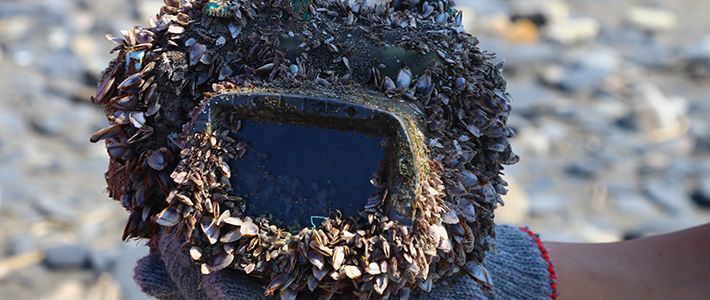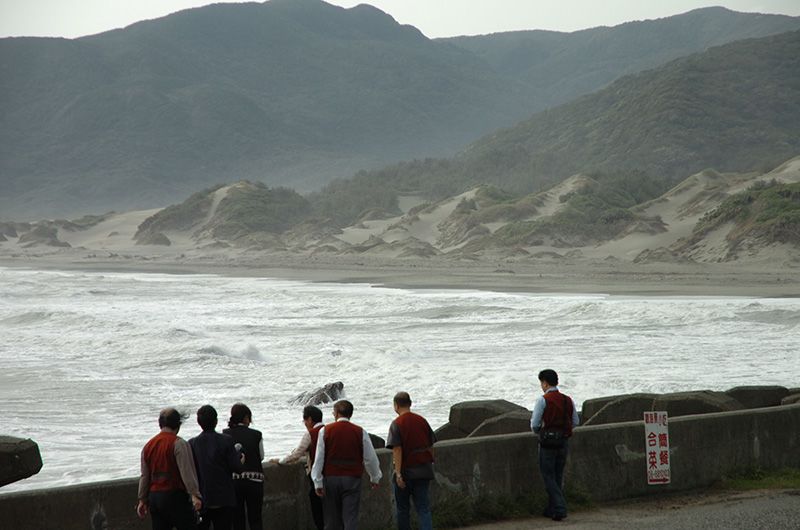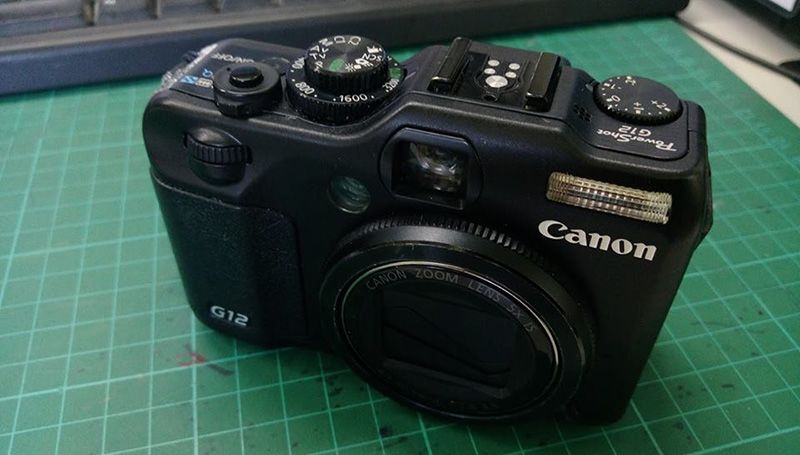
Fantastic Voyage: Lost Camera’s Ocean Journey Leaves Plenty of Mysteries to Ponder
Culture- English
- 日本語
- 简体字
- 繁體字
- Français
- Español
- العربية
- Русский
In March 2018, a digital camera discovered in a waterproof case encrusted with shells and barnacles made headlines worldwide. After going missing during a diving trip off the coast of the Okinawan island of Ishigakijima in September 2015, it spent two and a half years traversing the oceans before washing up in the town of Suao on Taiwan’s east coast. It had apparently crossed over the Kuroshio Current on its astonishing voyage, but many in both Japan and Taiwan wondered how this was possible, given that meant going against the flow of the powerful current. But thorough checking of the records reveals many incidents where boats have drifted ashore in Okinawa and Taiwan, sometimes with significant historical impact.
A Chance Discovery
Suao fifth-grader Ho Chao-en came across the camera by chance on March 27, while his school was cleaning up a local beach. When his teacher Park Lee checked the camera, he found that it was working perfectly and that there were 982 videos and photographs stored on the device, recorded between May 30 and September 7, 2015.
Lee located the Japanese owner the day after beginning his search by posting pictures from the camera on Facebook.
When I contacted Canon, the maker of the PowerShot G12 camera, a public relations spokesperson explained that the power automatically shuts off if the camera is not used for a set period of time. This is why there was still enough battery life for Park to turn it on two and a half years later. It was a powerful test for functions worked on during the development stages.
Against the Current
Ishigakijima is 230 kilometers from Taiwan. It is part of the Yaeyama Islands, which also include Japan’s westernmost point, the island of Yonagunijima—111 kilometers from Suao, the nearest point on Taiwan. The Kuroshio Current travels northeast from off the east coast of the Philippines, past eastern Taiwan into the East China Sea, to the sea off the Bōsō Peninsula in Chiba Prefecture. The Japan Meteorological Agency describes it as one of the world’s most powerful currents. It is fastest at a depth of around 200 meters and reaches a maximum speed of 2–2.5 meters per second, or 7–9 kilometers per hour. This may seem quite slow, but it adds up to around 200 kilometers each day.
Although the main current moves northeastward, there are numerous reverse currents, while the wind is also a factor. This means it is quite possible for ships and objects to travel toward the southwest.
In November 1871, a ship from Miyakojima in the Ryūkyū Islands (now Okinawa Prefecture) drifted to the southeast coast of Taiwan after encountering a typhoon. Three members of the crew of 69 perished during the voyage, but fully 54 were killed after landing by indigenous people. This prompted Japan’s recently installed Meiji government to launch a punitive expedition to Taiwan in 1874, a powerful signal to Qing China—which then controlled Taiwan—that the Ryūkyū Islands were Japanese territory.
 The Taiwanese coast off Manzhou in Pingtung where a ship drifted from Okinawa in 1871, causing an international incident. Photograph taken on November 25, 2011. (Courtesy Matsuda Yoshitaka)
The Taiwanese coast off Manzhou in Pingtung where a ship drifted from Okinawa in 1871, causing an international incident. Photograph taken on November 25, 2011. (Courtesy Matsuda Yoshitaka)
There is also a fifteenth-century account of three sailors from Jeju Island in Korea. After their vessel went adrift in 1477, they were rescued by two ships and spent around six months on what is now Yonagunijima. This is more than 1,000 kilometers south-southwest from where they began.
A Pacific Crossing?
Maeda Hiroshi of Taketomi, Okinawa Prefecture, completed a sailing voyage around the world in 2009. He says that if the camera went against the Kuroshio Current to arrive in Suao, “This miracle was achieved because the power of waves from a northeasterly winter seasonal wind combined with a reverse current.”
He also offered an alternative opinion on the camera, however, suggesting that the device traveled north on the Kuroshio Current, circled the Pacific, and returned to a more southerly section of the current before arriving in Taiwan. “Some research shows that among the sea turtles that come near to the Yaeyama Islands, there are some individuals that go north along the Kuroshio Current, move south along the west coast of North America, and then turn west when they reach the equator. They then arrive back at the Philippine seas where they were born.”
On the other hand, sea turtles choose where they wish to travel. There are records of them shunning beaches where they formerly laid eggs due to encroaching tourists. Tanizaki Shigeo, chairman of an Ishigakijima sea turtle research group, has been studying the animals since 1992. He drew attention to the lifeforms found on the camera housing. “From the pictures I’ve seen online, they all look like Lepas anserifera goose barnacles. If the camera had traveled across the northern Pacific, it would definitely have picked up some Mediterranean mussels or northern Balanomorpha.” According to Tanizaki, Lepas anserifera are distributed widely through the oceans, thereby providing no clue to the route of the camera. The absence of the other lifeforms, which prefer lower temperatures as found in the northern Pacific, suggest that the device did not travel through this area.
Study of the housing by specialists may give a clearer picture of where exactly the camera went. At the same time, fans of romanticism may prefer to imagine the extended ocean voyage suggested by the adventurer Maeda.
 The camera removed from its housing. (Courtesy Park Lee of Yue Ming Elementary School)
The camera removed from its housing. (Courtesy Park Lee of Yue Ming Elementary School)